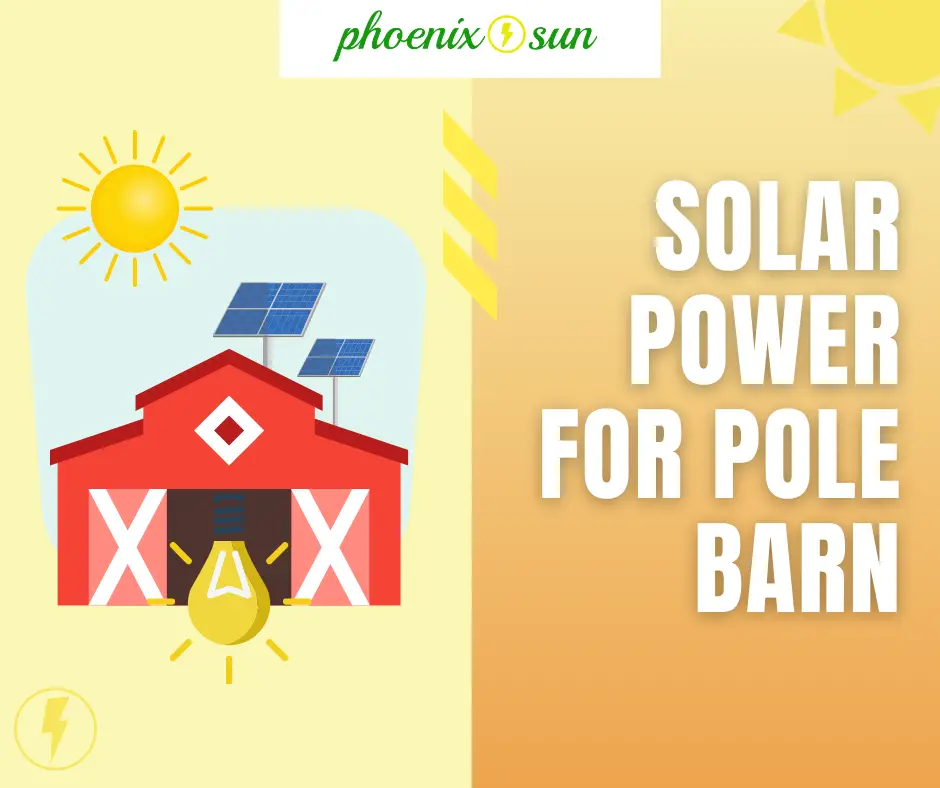Powering a pole barn can be a challenge if you are grid-tied. But what if you prefer an off-grid lifestyle? Is it possible for you to run your pole barn on solar power? Yes. Solar can produce as much energy as needed by tools and equipment in the structure.
The solar-powered pole barn will help you save on monthly electricity bills. Once you have paid the upfront cost for buying solar panels, you do not have to worry about any other expenses apart from the maintenance cost.
We will focus on how you can determine the power rating of your pole barn solar system. We will also walk you through the steps needed to install it. Keep reading because we have even more for you to learn.
Contents
Can You Power Pole Barn Solar Power?
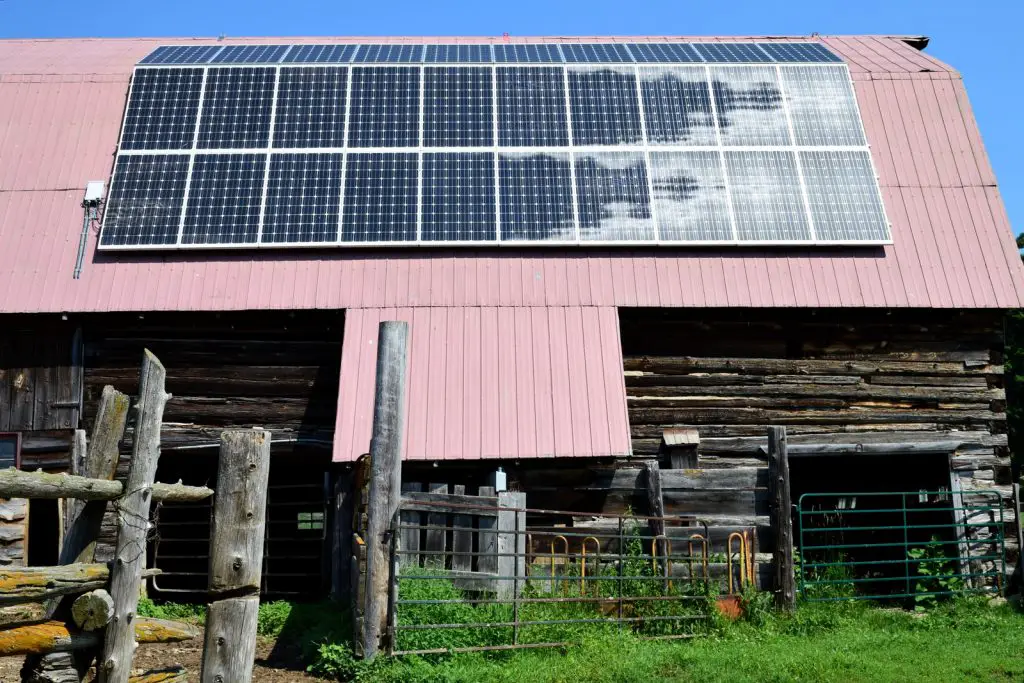
The answer is a big YES. Like utility power lines, solar panels can generate as much energy as you need to power everything in the structure.
A pole barn can be used as a home office, workshop, party venue, equipment shed, detached garage, etc., and these influence power requirements.
Regardless of the electricity demanded by your pole barn, solar panels can provide it. You only need to have the solar panels you need. And to do that, determine your energy requirements to run all the equipment and tools in the pole barn.
A solar-powered pole barn is a crucial step towards achieving off-grid living. Additionally, the excess energy generated by your solar panels can be used for any other purpose. Think of watching TVs and powering floodlights for security; both can run on solar.
A pole barn offers you an ideal place to install your solar panels. You can have them on the roof or the ground depending on the roof orientation. Another thing you would want to avoid is the shady roof. Otherwise, you are better off with a solar-powered pole barn.
How Many Solar Panels Do You Need For Pole Barns?
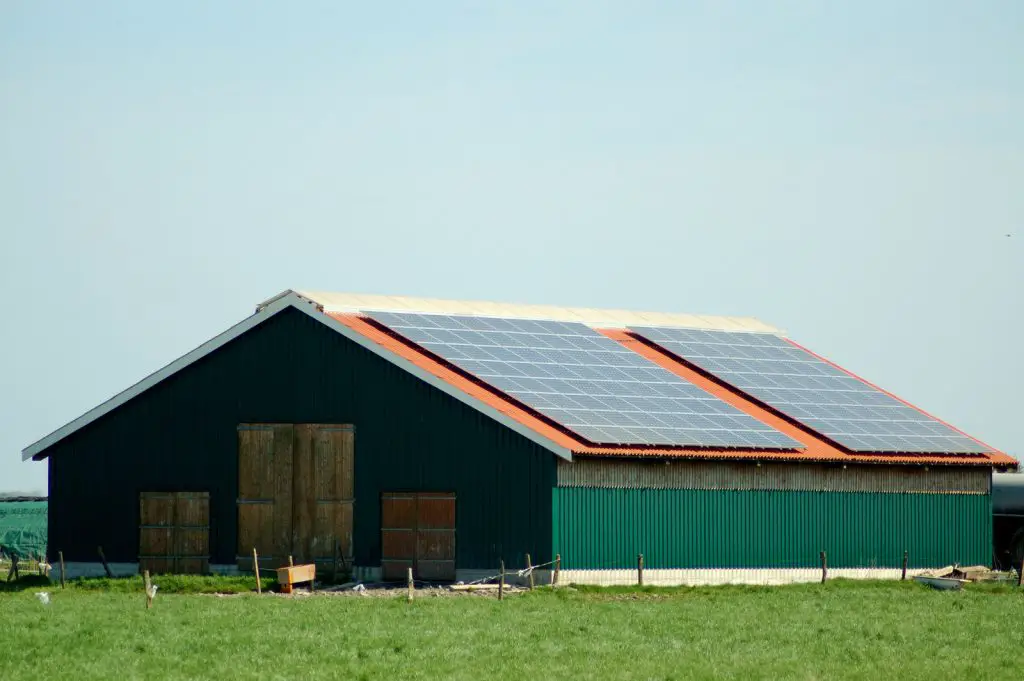
This question is tricky because it depends on your individual power requirements. Different pole barns have varying equipment and working tools that require power. So, to answer the question, let us first talk about the uses of a pole barn.
A basic pole barn can be used as an animal, equipment shed, or a simple garage. You only need to power lights and an automated door in that case. Here, we also must note that different doors require varying power to open and/or close.
For this basic setup of a few lights and an automated door, your pole barn will probably require about 45KWh of energy per month. To arrive at your pole barn’s monthly energy requirements, get the sum of wattage ratings of the lights and automated door.
For a pole barn used as a workshop, you will have additional tools and equipment such as bench saws, drills, water pumps, washing machines, etc. These are all heavy consumers that will add to the power requirements of your pole barn.
Assuming you use your pole barn as a simple garage, home office, or animal shade, the monthly energy requirement is about 45kWh. You only need 1-3 solar panels rated 300 watts each to power it.
If you have more tools and equipment in the pole barn, you will need more solar panels.
Clearly, the number of photovoltaic panels needed to power your pole barn depends on the energy requirements of your pole barn. That also depends on the use of your structure and affects power requirement.
If you cannot compute that value, then you can hire a technician to help you calculate your pole barn’s monthly energy consumption. Alternatively, you can use an energy meter if you are still grid-tied to monitor the consumption rate, which is even more accurate.
8 Steps Install Solar Power For Pole Barn
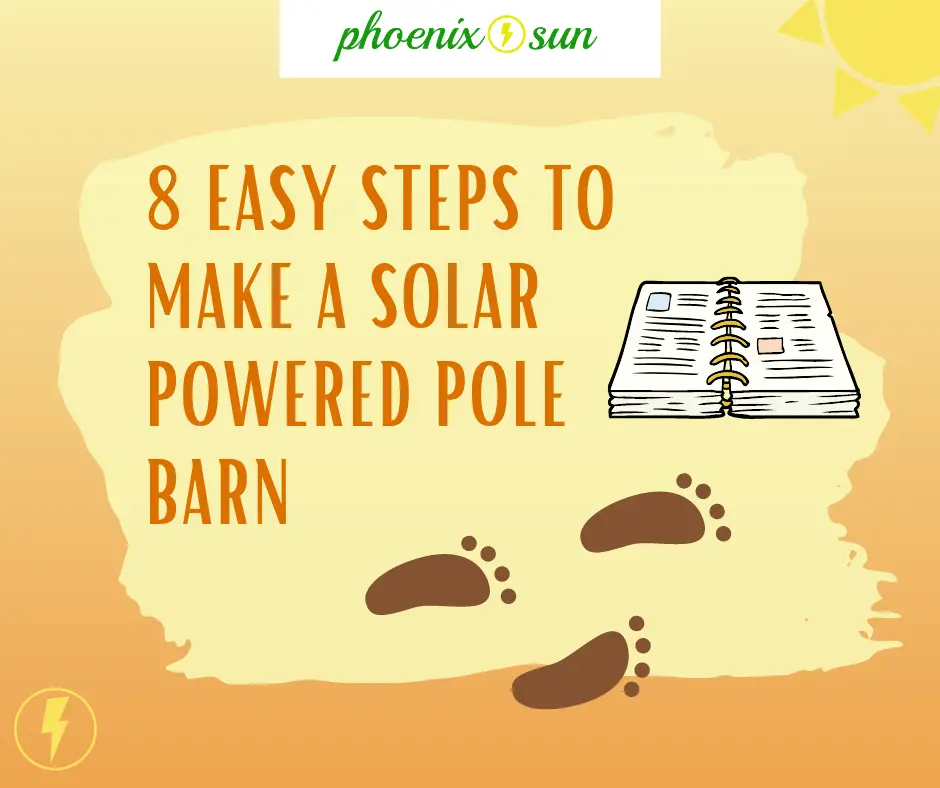
The success of your project will depend on your preparation and how you start it off. A poor start will definitely ruin everything that follows. Proceed as follows to install a solar system for your pole barn:
Calculate Your Needs
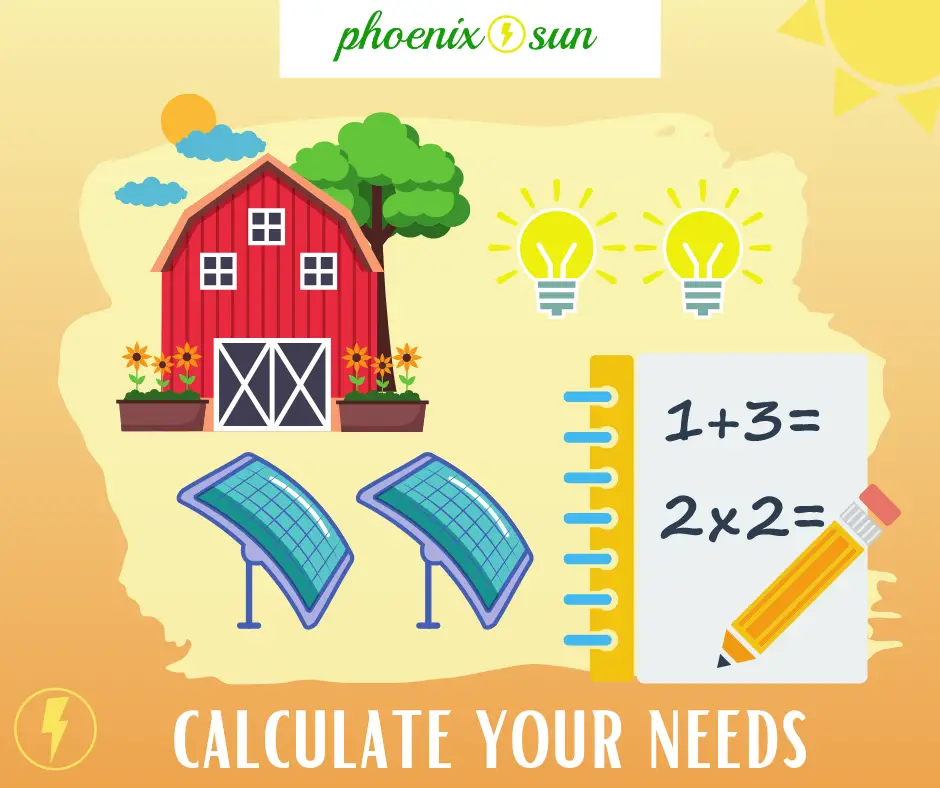
The first thing you need to do before shopping for solar panels or any other thing you need is to compute the structure’s power requirement. This figure will determine the number of photovoltaic panels, their rated output power, and other things.
We will not assume that you can determine the electricity your pole barn uses per month. In the previous section, we highlighted ways of doing it, and we will remind you again.
Determine the power rating of all the equipment and tools in your pole barn, beginning with lights and doors. That is the power they will use per hour, but not all will be running concurrently. Hence, the need to get an average value.
An energy meter can help you get an average power consumption over a month, but the approach is only viable if you have a grid-tied pole barn. You can hire an expert to help you get this value and determine the number of solar panels you need to buy.
Check If You Can Install Solar Panels On The Pole Barn Roof
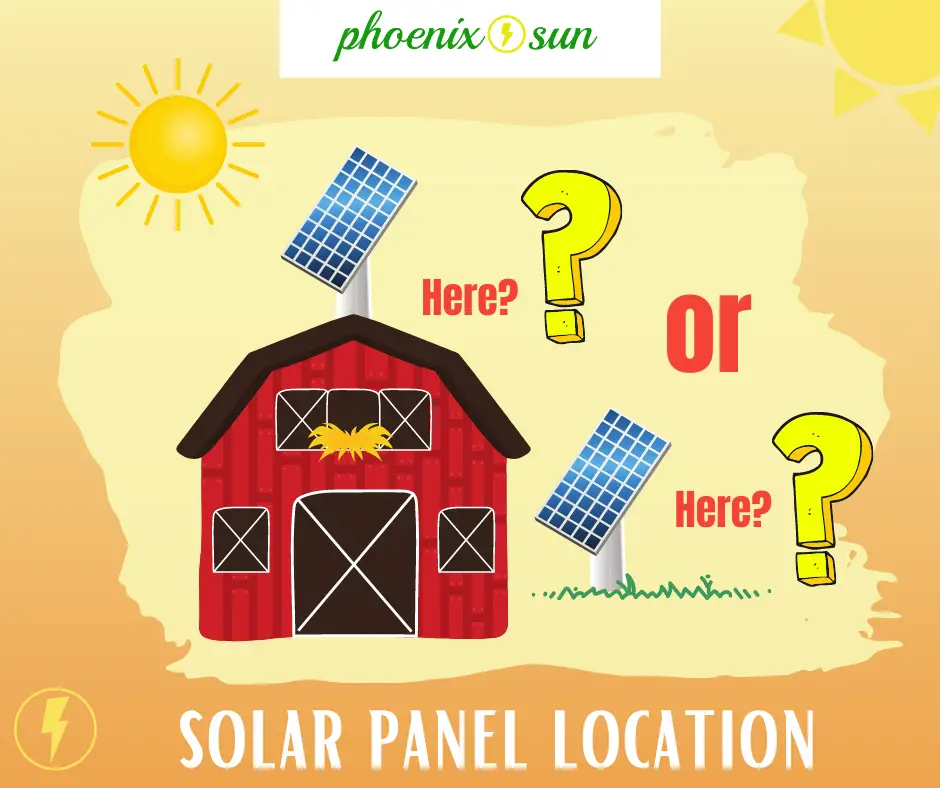
Apart from generating electricity, solar panels and their installation frames add weight to your roof. First, determine the roof’s structural strength to hold the recommended number of these photovoltaic panels.
Secondly, you have to estimate the structure’s roof lifespan. Can it bear the solar panel’s weight for the next 25 years? You do not want to interrupt your installation because you need to renovate the roof.
A metal pole barn roof is the most preferred for solar installation because of its durability.
Your solar panels need maximum exposure to the sun. So, if your pole barn roof is shady, you cannot install your solar on them. Instead, the ground is the best option.
Also, the panels should be oriented to face south. If the roof does not conform to this requirement, then it is not an ideal option. South-facing solar panels get more hours of sunlight, which is to your advantage.
Interstate Batteries 12V 110 AH SLA/AGM Deep Cycle Battery for Solar
- DEEP CYCLE MOBILITY BATTERY: Interstate Batteries DCM0100 professional-grade, high-quality battery developed specifically for RV's, solar, trolling motors, wheelchairs and more. Longer life & more cycles for deep discharge usage – Interstate’s DCM batteries rated as the best performer for heavy-demand deep-cycle batteries, making them Outrageously Dependable
- DCM0100 BATTERY REPLACEMENTS: This battery's universal fit works with 12V 110AH + 100AH battery applications. Download the Compatibility Guide below under Product Guides & Documents to see some devices this battery powers. MK BATTERY, LITHONIA, OSI BATTERIES, MIGHTY MAX, SHERRY, CONCORDE, EVEREST & JENNINGS, DURACELL, DEKA, ADEMCO, BATTERIES PLUS, FIRE LITE, GAYMAR-RETEC, ALPHA CELL, WEIZE, ODYSSEY, SCOOTERBUG, PERMOBIL USA & more
- RECHARGEABLE, MAINTENANCE-FREE, SPILL-PROOF: Rechargeable, maintenance-free, & spill-proof because of the AGM & VRLA technology (valve regulated) that eliminates spills & overpressure. 12 Volt, 110 Amp hours. 13.31” x 6.69” x 8.54” (LxWxH). Industry size Group 29. Insert terminal with bolt, replaces FLAG TY. This battery is not a replacement for Golf Cart batteries
List Out The Equipment To Run Pole Barn On Solar
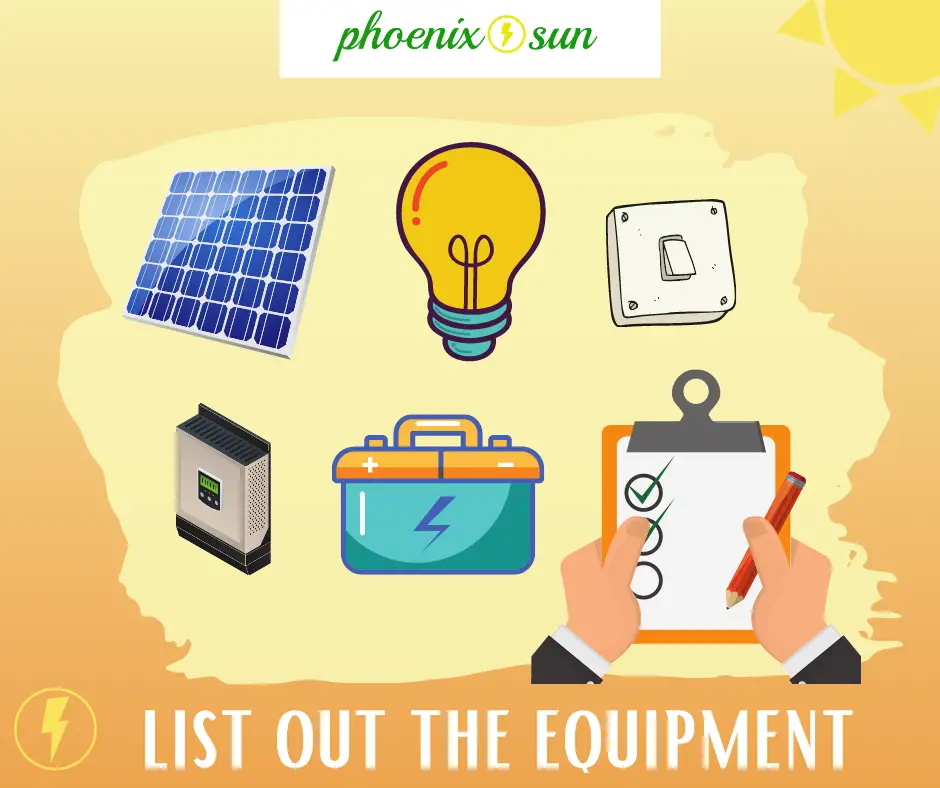
To source power from the sun using a solar panel, you need a complete system with all the components. This is true for a pole barn or any other solar-powered device. Following are the tools and equipment you need:
- Solar panels – convert the solar power into electricity
- Charge controller – Monitors the charge level of your battery bank and controls the charging current into the batteries. You need it for healthy charging and discharging, which lengthen the batteries’ lifespan.
- Power inverter – Batteries store direct current (DC) power. Not all your pole barn equipment can operate with DC power. Some might need alternating current (AC) power. So, you need an inverter to convert it. You can have a hybrid inverter that controls charging and converts DC to AC power. In that case, you will not need a charge controller.
- Battery bank – Energy from the sun is only available during the day, but your pole barn lights and other equipment might require power at night as well. To ensure continuous power availability, you need a battery bank to store it.
- The cables – Everything needs to be wired together. Solar panels are either wired in series, parallel, or a hybrid of the two and then wired to the controller then to the battery. The equipment is also wired to the battery through the inverter.
- Others – You also need switches and circuit breakers to ensure the system’s safety. If not installed correctly, a solar power system can be as dangerous as the grid.
Purchase
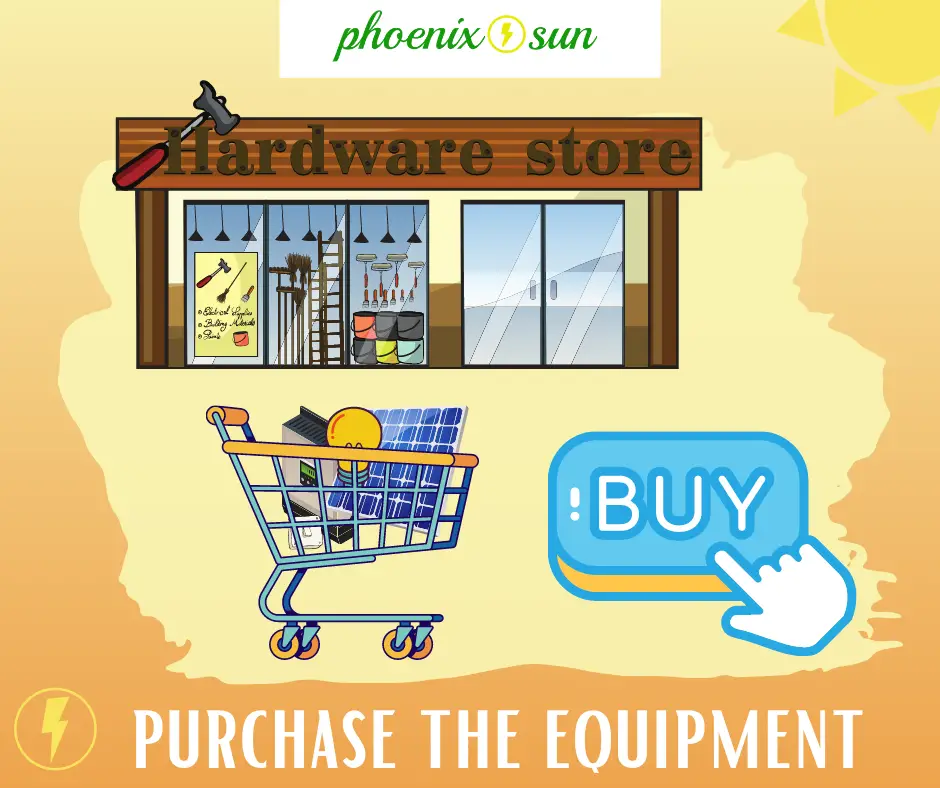
Thus far, you know the energy requirement of your pole barn and the system components you need to buy. Now it is time to head to the market and buy them.
You need to identify a reputable seller of authentic solar system products. You are most likely to find everything you need from one supplier. However, you need to be very cautious because you can easily be duped.
As much as you wish to save on the project cost, do not be lured by the lucrative prices. Go for high-quality items even if it means paying more for them. That will save you from future problems and enhance the system’s reliability.
Most suppliers or manufacturers have warranties for their products. You can consider buying from them so that your concerns about performance can be addressed at no extra cost.
Goodeco Solar Barn Light
Install Solar Panels
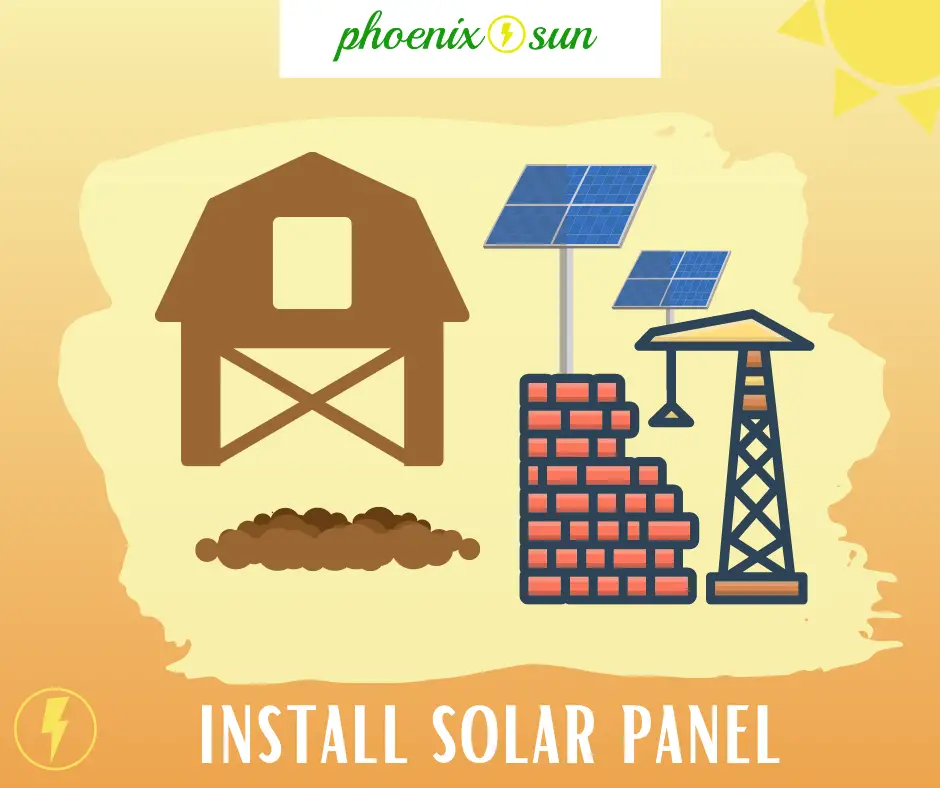
You are from the market with everything packed in a box. Now it is time you have to build something visible. A word of caution, do not attempt this step if you are not confident enough. Consult a technician if you are in doubt.
Up to this point, we want to believe that you have prepared where the solar panels are to be installed. Remember what we said: it should be a south-facing orientation away from any shade. If the roof cannot support them, then consider ground installation.
Solar panels are attached to the base rails, bolted to the roof frame. If you are doing a ground installation, then the base should be hooked to the ground. In other words, solar panel installation should be permanent.
Prepare the installation site, bolt the base, and attach the solar panels onto the rails. Remember to wire them as you proceed with the installation. Doing it later might be challenging.
Connect The Equipment
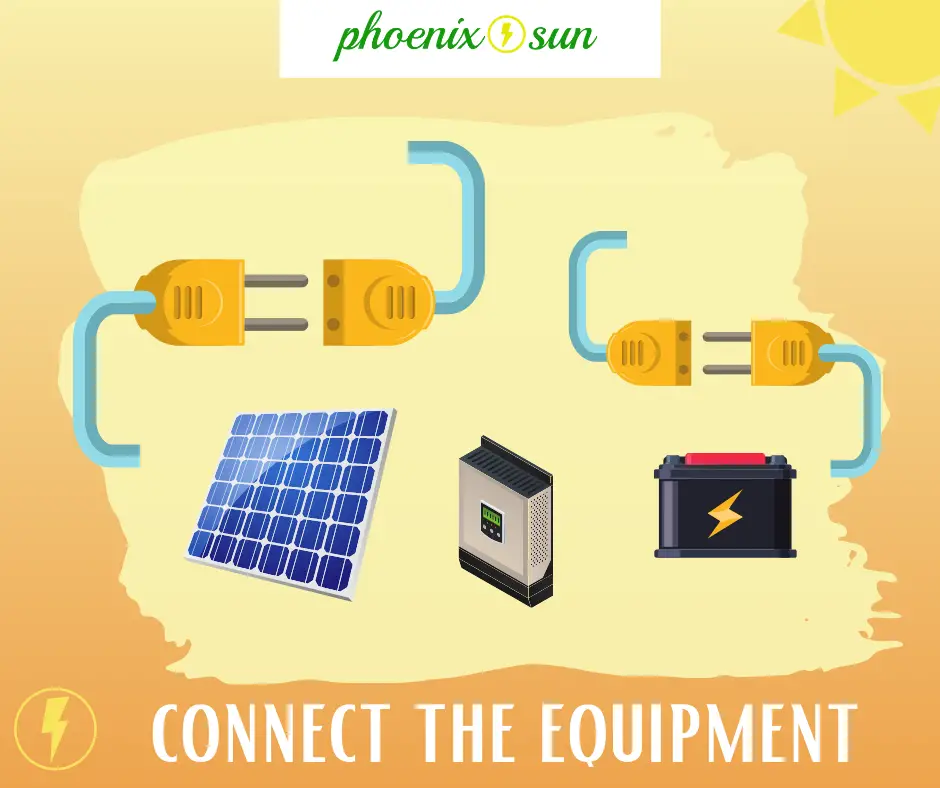
You can wire all other components to form a functional solar power system with your solar panels ready. The batteries, charge controllers, power inverters, and devices are connected.
You also need to use the recommended wire gauges, switches, and circuit breakers. Unlike the grid power system, a solar system might need lower voltage ratings for the equipment. The installed system should provide enough energy if everything is connected well.
Here is a solar power connection for a pole barn.
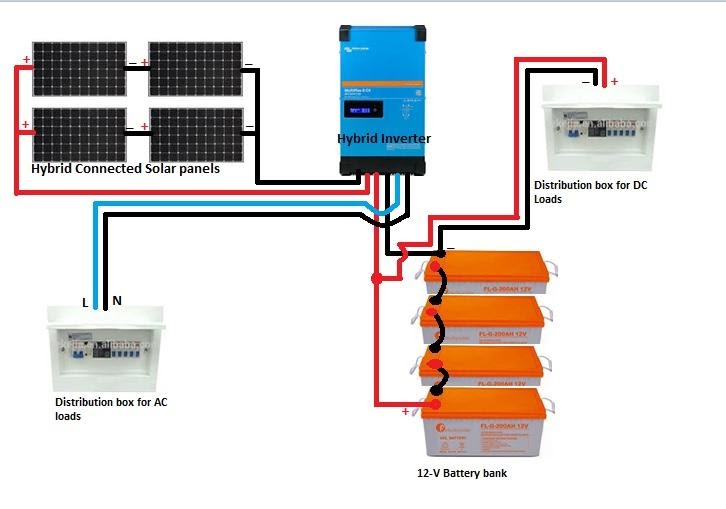
Test Out The Output Energy
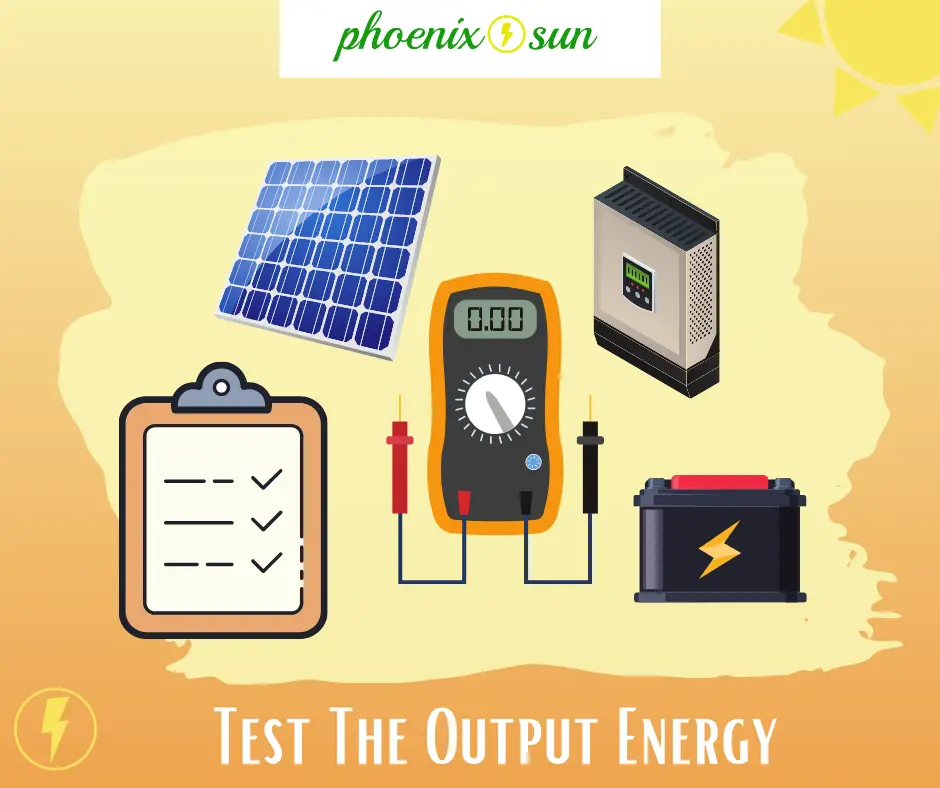
A solar power system requires a great deal of investment. After having everything ready, we know you are eager to see it work. But you need to test it before switching on other devices that it needs to supply with electricity.
The simplest way of testing your solar system is to measure the power input from the solar panel and the power output. The ratio of power output and power output gives you the efficiency, and hence, the performance.
A successfully connected system should provide the expected energy to power your entire pole barn. If that is not the case, you meet a technician to evaluate and diagnose the problem.
Resolving the situation might include rewiring everything or replacing some components if found faulty. There should be no problem with the solar panel if you position them facing south and away from any shade.
Your solar power system will provide power proportional to the sunlight received or sunlight exposure hours.
Complete Your Installation
A solar power system has a lifespan of about 25 years. After a successful installation, you can expect free energy for all these years with minimal maintenance.
Reinspect the entire solar system to ensure that everything is connected as it should be. It should not be by luck that it passed the test. After doing so, wire all the devices in your pole barn that will use solar power and keep track of all of them.
Indoor Barn Lights Solar
How Much Do You Need To Spend To Power Your Pole Barn On Solar?

The cost of a solar power system for a pole barn depends on many factors, such as the number of solar panels, VAT, installation cost, etc., and that also depends on your pole barn’s use and energy requirement.
This is only an estimate of what it might cost you to have the solar power system up and running. A better cost estimate can be achieved after knowing the exact number of solar panels needed and contacting a supplier or a manufacturer.
Also, the total cost of a solar power system for pole barns can quickly escalate beyond what is represented in the table, depending on the energy requirements.
| Energy Needed | How Many 300 Watt Solar Panels | How Many 500 Watt Solar Panels | Spend on Others (Inverters, Batteries,…) | Total Cost |
| 1500 watt | 2 panels | 1 panel | $1500 | $2500 |
| 3000 watt | 2 panels | 2 panels | $2000 | $2700-$2800 |
| 4000 watt | 3 panels | 2 panels | $2500 | $3000-$3200 |
| 5000 watt | 4 panels | 3 panels | $3000 | $3500-$3800 |
Wrapping Up
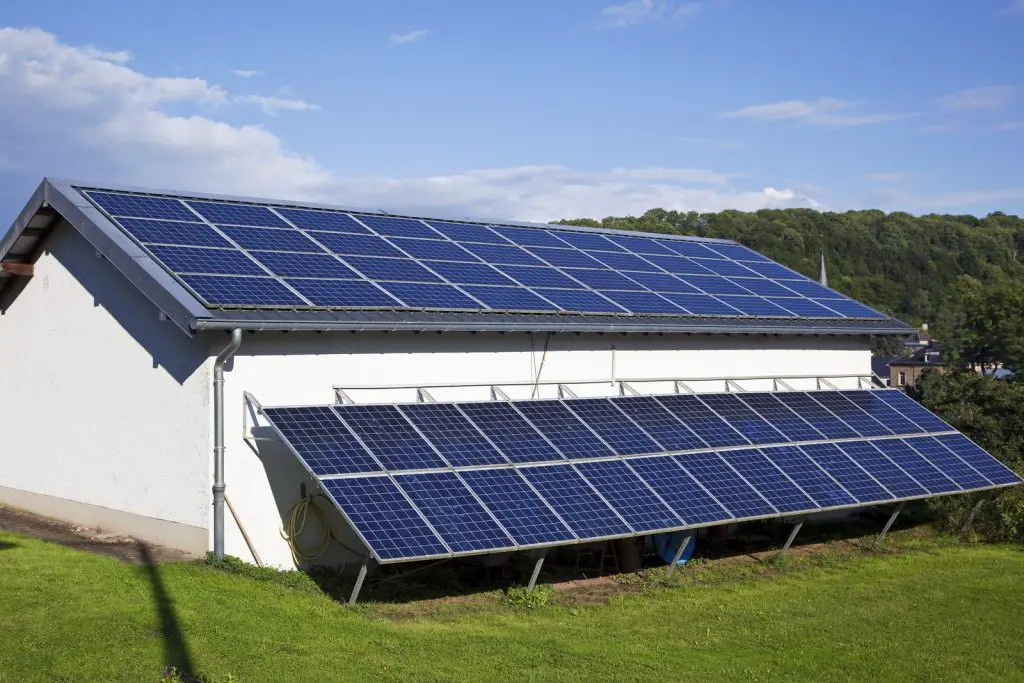
A solar power system is appropriate for your pole barn energy problems. It is clean energy that comes free, provided you have purchased the components needed.
Using the steps and tips offered in this article, you can design and install your own system. Your solar power system has an estimated lifespan of 25 years. To make you serve you longer, you need to monitor it and carry out regular maintenance as required.
Depending on the type of battery used, you might need to top up the electrolyte with battery water periodically.
Renogy 100 Watts 12 Volts Monocrystalline Solar Starter Kit
- 【Efficient Performance】This Starter Kit can generate an average of 500Wh of electricity per day (varies with sunlight). The solar panel boasts a 22.5% cell efficiency, 1.3% higher than other counterparts. Each panel dispatched from our facility undergoes 100% EL testing, ensuring that your panel is completely free from any hidden cracks.
- 【Market-Leading Service Plan】Enjoy worry-free usage with our market-leading service plan, providing 10 years of coverage for solar panel material and workmanship, along with a 2-year plan for the charge controller. Additionally, benefit from a 25-year service plan for the power output of the panel.
- 【Exceptional Safety】Certified by UL 61730, CSA C22.2#61730, IEC 61730/IEC 61215, our solar panel withstands 2400Pa wind and 5400Pa snow loads. Featuring IP65-rated J-box and IP67-rated solar connectors, rest assured, it can tackle any weather challenge.
